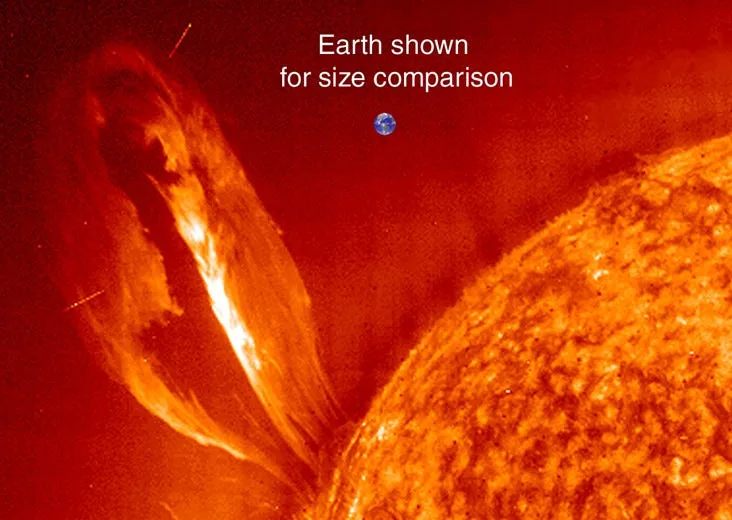NASA’s Solar Dynamics Observatory has identified a massive black area on the sun known as a “coronal hole,” which could accommodate up to 20-30 Earths arranged in a row.
These holes emit powerful solar winds into space, traveling at speeds of 500-800 kilometers per second, but they are typically harmless.
The solar winds are expected to reach our planet by Friday and could result in a spectacular aurora. Unlike their name suggests, these coronal holes are not physical gaps in the sun’s surface; instead, they appear black due to their cooler temperatures and low luminosity compared to the rest of the sun.
According to Alex Young, associate director for science at NASA Goddard’s Heliophysics Science Division, the current coronal hole measures around 300,000 to 400,000 kilometers across.

Coronal holes like these are common. There is “nothing unusual here,” Scott McIntosh, a solar physicist and deputy director of the National Center for Atmospheric Research, told Insider in an email.
Holes like this are part of the sun’s normal activity. However, they’re “not well understood. Their origins are unclear,” McIntosh added, calling these events “the ‘dark side’ of solar activity.”
It’s worth noting that these coronal holes are the source of rapid solar winds — reaching speeds of about 500-800 km per second, Young wrote to Insider. In this case, the solar winds from this coronal hole are scheduled to reach Earth by the end of this week.
“We will probably start seeing the effects of the high-speed wind on March 24,” Young added. “When the high-speed wind reaches Earth, the particles and the magnetic field it carries will interact with Earth’s magnetic field, effectively rattling it or like ringing a bell.”
More powerful magnetic fields, like from a coronal mass ejection, could cause electrical blackouts or disrupt communication technology. But coronal holes — even large ones like this — are far less violent. So the main effect to look forward to this Friday is more vibrant aurora borealis.
However, we are entering a new phase of increasing solar activity where coronal holes will be less the norm and coronal mass ejections (CMEs) and powerful solar flares will become more common, Young said.
That can be a concern since the powerful magnetic fields from CMEs and solar flares have been known to surge power grids and fry satellites. However, these events are few and far between.
In reality, Young said that for him and other solar scientists, as solar activity increases, “it’s gonna get more and more exciting and interesting.”


